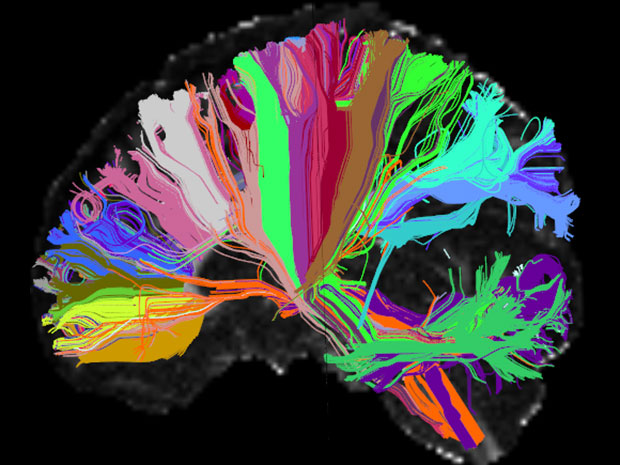The Human Connectome Project (HCP) is a five-year project sponsored by sixteen components of the National Institutes of Health, split between two consortia of research institutions.
The goal of the Human Connectome Project is to build a “network map” (connectome) that will shed light on the anatomical and functional connectivity within the healthy human brain, as well as to produce a body of data that will facilitate research into brain disorders such as dyslexia, autism, Alzheimer’s disease, and schizophrenia. (wikipedia)
Mapping the human brain is one of the great scientific challenges of the 21st century. The Human Connectome Project (HCP) is tackling a key aspect of this challenge by elucidating the neural pathways that underlie brain function and behavior. Deciphering this amazingly complex wiring diagram will reveal much about what makes us uniquely human and what makes every person different from all others.
The consortium led by Washington University, University of Minnesota, and Oxford University (the WU-Minn HCP consortium) is comprehensively mapping human brain circuitry in a target number of 1200 healthy adults using cutting-edge methods of noninvasive neuroimaging. It will yield invaluable information about brain connectivity, its relationship to behavior, and the contributions of genetic and environmental factors to individual differences in brain circuitry and behavior.
Starting with the first quarterly (Q1) data release (March, 2013), HCP datasets are being made freely available to the scientific community. Four imaging modalities are used to acquire data with unprecedented resolution in space and time. Resting-state functional MRI (rfMRI) and diffusion imaging (dMRI) provide information about brain connectivity. Task-evoked fMRI reveals much about brain function. Structural MRI captures the shape of the highly convoluted cerebral cortex. Behavioral data provides the basis for relating brain circuits to individual differences in cognition, perception, and personality. In addition, a subset of participants will be studied using magnetoencephalography (MEG).
Successful charting of the human connectome in healthy adults will pave the way for future studies of brain circuitry during development and aging and in numerous brain disorders. In short, it will transform our understanding of the human brain in health and disease. (http://www.humanconnectome.org/)

